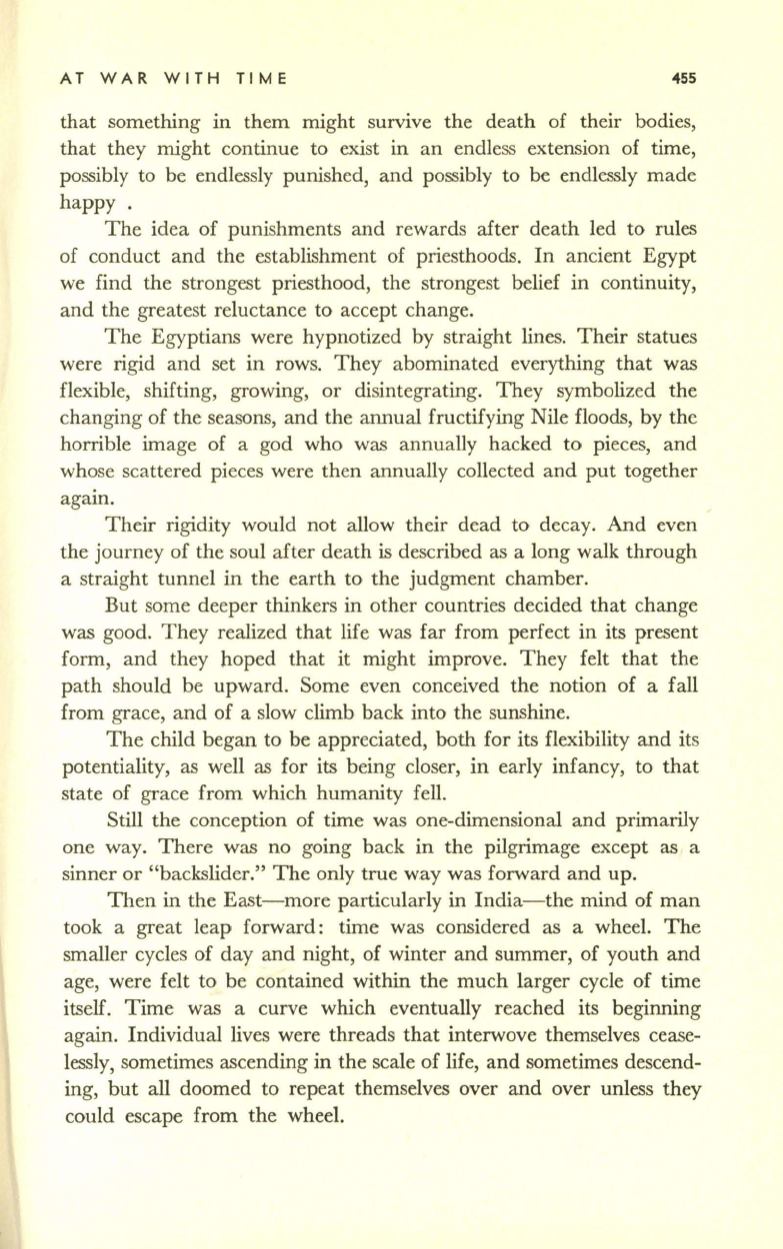
AT WAR WITH TIME
455
that something in them might survive the death of their bodies,
that they might continue to exist in an endless extension of time,
possibly to be endlessly punished, and possibly to be endlessly made
happy.
The idea of punishments and rewards after death led to rules
of conduct and the establishment of priesthoods. In ancient Egypt
we find the strongest priesthood, the strongest belief in continuity,
and the greatest reluctance to accept change.
The Egyptians were hypnotized by straight lines. Their statues
were rigid and set in rows. They abominated everything that was
flexible, shifting, growing, or disintegrating. They symbolized the
changing of the seasons, and the annual fructifying Nile floods, by the
horrible image of a god who was annually hacked to pieces, and
whose scattered pieces were then annually collected and put together
again.
Their rigidity would not allow their dead to decay. And even
the journey of the soul after death is described as a long walk through
a straight tunnel in the earth to the judgment chamber.
But some deeper thinkers in other countries decided that change
was good. They realized that life was far from perfect in its present
form, and they hoped that it might improve. They felt that the
path should be upward. Some even conceived the notion of a fall
from grace, and of a slow climb back into the sunshine.
The child began to be appreciated, both for its flexibility and its
potentiality, as well as for its being closer, in early infancy, to that
state of grace from which humanity fell.
Still the conception of time was one-dimensional and primarily
one way. There was no going back in the pilgrimage except as a
sinner or "backslider." The only true way was forward and up.
Then in the East-more particularly in India-the mind of man
took a great leap forward: time was considered as a wheel. The
smaller cycles of day and night, of winter and summer, of youth and
age, were felt to be contained within the much larger cycle of time
itself. Time was a curve which eventually reached its beginning
again. Individual lives were threads that interwove themselves cease–
lessly, sometimes ascending in the scale of life, and sometimes descend–
ing, but
all
doomed to repeat themselves over and over unless they
could escape from the wheel.


